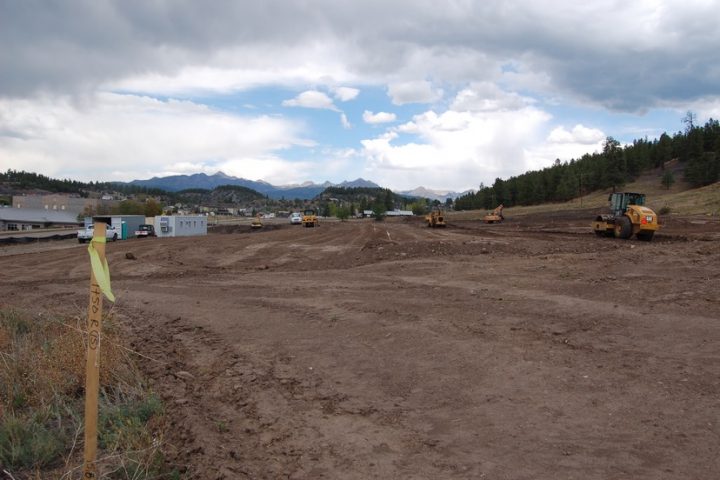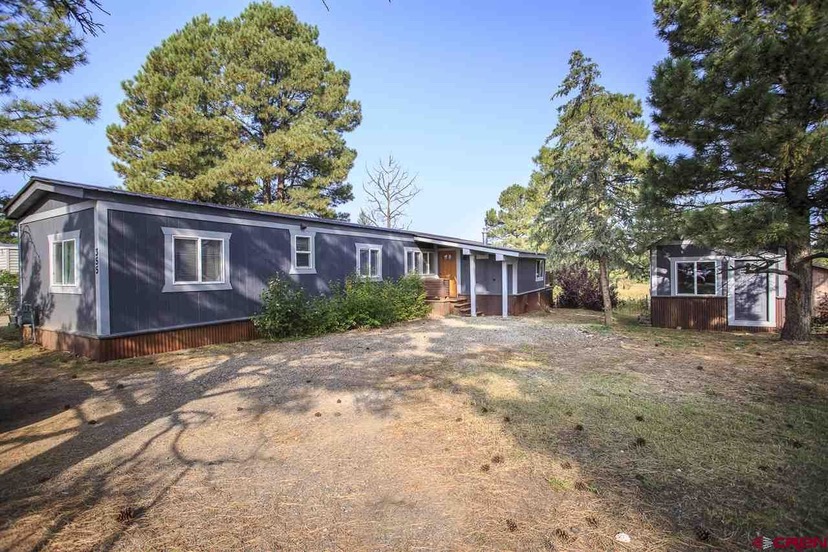According to the staff report provided to the Pagosa Springs Town Council on August 20 — regarding the partly-developed half-acre parcel on Apache Street — the Council had previously discussed the idea of purchasing this property to be used for ‘workforce housing units”.
The staff indicated the meaning of the term “workforce housing units”:
“80%-120% AMI”
Presumably, the Town Council has grown accustomed to seeing these types of “AMI” numbers presented, because they’ve seen them during other Council discussions about housing and subsidies and deed restrictions and so on. Whether the Council has thought deeply about what this range — “80%-120% AMI” — truly means, I cannot say.
In case any of our readers are unsure of the meaning, here’s my concept of what “80%-120% AMI” means.
The federal government created the Federal Housing Administration (FHA) in 1934 to address a serious housing industry crisis. During the Great Depression many banks failed, causing a drastic decrease in home loans, and home ownership. The banking crisis of the 1930s compelled mortgage lenders to retrieve due mortgages; refinancing was not available; and many borrowers, now unemployed, were unable to make mortgage payments. Consequently, many homes went into foreclosure, causing the housing market to crash.
But the federal government was ready to help out… to protect property values.
Not the values of brotherhood, justice and equality, mind you, but “property values”. In 1935, the FHA furnished its appraisers with an ‘Underwriting Manual’, which provided the following instruction:
“If a neighborhood is to retain stability it is necessary that properties shall continue to be occupied by the same social and racial classes. A change in social or racial occupancy generally leads to instability and a reduction of values.”
Appraisers were told to give higher property and zoning ratings where “protection against some adverse influences is obtained”… with “adverse influences” defined as “infiltration by inharmonious racial or nationality groups”. As we might guess, the principal beneficiaries of FHA loans were middle-class White Anglo-Saxon Protestants. You know, the ones from a harmonious racial and nationality group.
With the creation of the Department of Housing and Urban Development (HUD) in 1965, during the Lyndon Johnson administration, the federal government began to focus some of its efforts on lower income families, of all ethic backgrounds, with an emphasis on those living in slum conditions. In order to better define the groups HUD aimed to help out, the agency developed an “AMI” ranking for each American community — because the price a lower-income family would pay for a two-bedroom home in New York City, for example, was not identical to the cost of a similar house in, say, Jumpertown, Mississippi.
I have no idea how HUD manged to develop “Area Median Income” numbers for each community, but these income numbers were used by HUD and other housing agencies to qualify families, and to fund projects of various types. In order to qualify for Low Income Housing Tax Credits, for example, the Rose Mountain housing project on Hot Springs Boulevard must rent most of their 34 planned units to households earning 60% (or less) of Archuleta County’s ‘Area Median Income’.

The HUD website does not use the term “AMI” but rather “Median Family Income” (MFI). I assume the two terms mean the same thing.
For Archuleta County, the 2020 MFI is $58,400. As mentioned, I don’t know exactly how this number is generated. My family has never had someone from HUD knock on our door and interview us about our income level. I am guessing the number might be derived from Archuleta County income tax filings, provided to HUD by the IRS. But if we take it to be a reasonable estimate, then — given that this is a median, and not an ‘average’ — half of our community’s families have incomes higher than $58,400, and half have incomes under $58,400. How much higher, in the case of the richer half, we are not told. How much lower, in the case of the poorer half, we don’t know. We assume only that the lucky family right in the middle of everyone probably has an income in the neighborhood of $58,400.
We do know, however, that many individuals working full time jobs in Pagosa, are earning less than $30,000 a year — based on information provided by the US Bureau of Labor Statistics.
Colorado has an agency that works closely with HUD to help families — of all social and ethic backgrounds — obtain safe, affordable homes. The Colorado Housing & Finance Authority, better known as CHFA (pronounced “Chaff-uh”) maintains a website where you can calculate the size mortgage your family can afford.
If your lucky family has a an annual income of $58,400… (and you didn’t lose your job during the COVID crisis)… and you happen to have $10,000 saved up for a down payment… and your mortgage company is willing to offer a 3.2% interest rate… you can afford, says CHFA, a home priced at about $242,000. Your monthly payment, CHFA estimates, will be about $1,400 a month.

A visit to the Jim Smith Real Estate website this morning lists 14 homes for sale in Archuleta County, priced at $242,000 or less. Apparently, if you are that lucky median family with an income of $58,400 per year, and a hefty savings account, and great credit, you have a few housing options in Pagosa Springs.
But the proposal presented to the Town Council, for promoting “workforce housing”, mentions “80%-120% AMI”. Does the Town Council understand that a family earning 120% of AMI has a considerably larger income than the vast majority of people in Archuleta County?
That a family earning “120% AMI” has an income of $70,000 a year — easily twice the income of a typical “workforce” employee here in Pagosa?
Does the Town Council really want to spend taxpayer revenues, to subsidize housing for a family earning $70,000 a year?
When half of our families earn less than $58,400?

